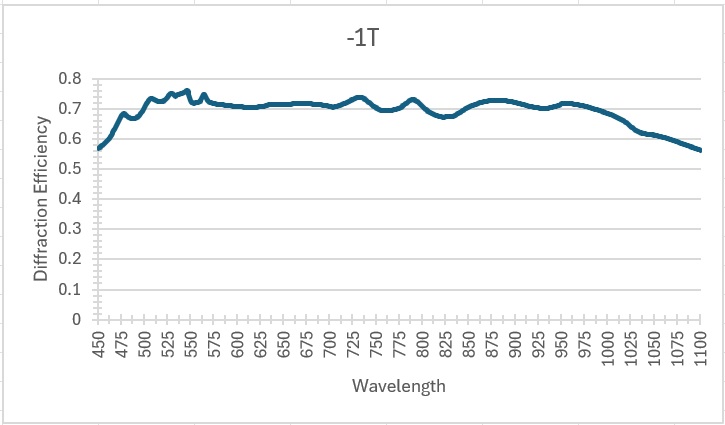Updated:2025-03-13
Views:1712
 WeChat
WeChat
 QQ
QQ
 Online Service
Online Service
Transmissive gratings are a type of diffractive grating designed to diffract light transmitted through them at angles depending on wavelength. They have lower alignment sensitivities when compared to reflectance gratings, making them more robust given slight changes in environment.
Additionally, transmissive gratings have a significant edge on throughput when compared to traditional reflective gratings, and with our ability to use a fused silica substrate, we're able to achieve deep UV sensitivities.
See our specifications table for some typical diffraction efficiency curves optimized across wavelengths. The grating profiles can be modulated to optimize diffraction efficiency at certain wavelengths.
Features
UV Sensitive with Fused Silica Substrate
High Through-Put Compared to Reflective Grating
Customizable for OEM Solutions
Repeatable — Low Unit to Unit Variation
Environmentally Stable and Robust Design
Transmissive Gratings Specifications
VIS-NIR 
SWIR 
| Wavelength Range (mm) | Line Density (LPMM) | Angle of Incidence (AOI) | |
| UV | 200-400 | 2500 | 15.5 |
| UV-VIS | 200-800 | 1250 | 29.9 |
| VIS | 362-785 | 1250 | 15.5 |
| NIR | 400-1100 | 909 | 16.1 |
| SWIR | 900-1700 | 571.4 | 17.8 |

| Wavelength Range (mm) | Line Density (LPMM) | Angle of Incidence (AOI) | |
| 1030/1064 | 1000-1100 | 1250 | 39 |


| Wavelength Range (mm) | Line Density (LPMM) | Angle of Incidence (AOI) | |
| 840 CWL | 800-880 | 1250/1190 | 30 |
Customer Service QQ
Customer Hotline:
Technical Supports